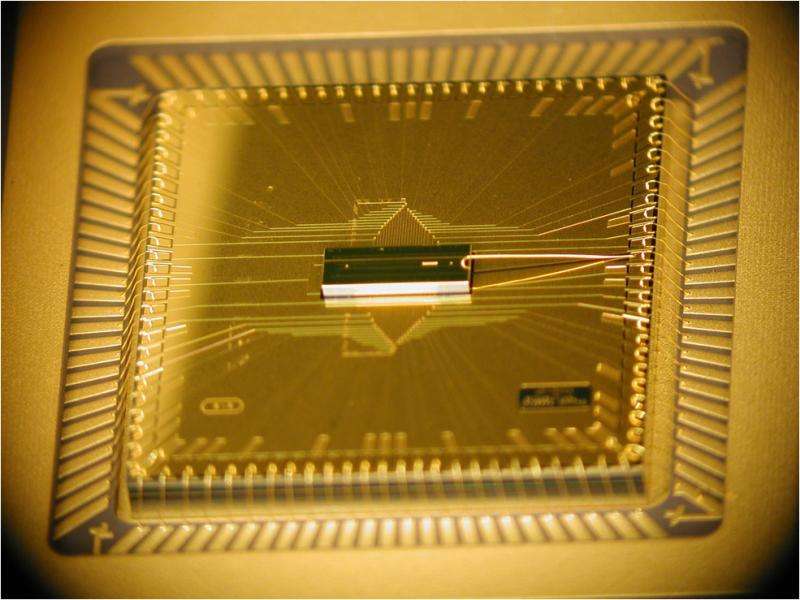May 11, 2015 report
Best of Last Week – A quantum shortcut, a ten-engine plane and cell phones that bother babies in utero

(Phys.org)—Once again, it was a good week for physics as a team of researchers found a quantum shortcut that could speed up many quantum technologies—they devised a new method for preparing quantum states for many-body systems that combines shortcuts to adiabaticity with optimal control. Also, another team of researchers demonstrated a new chip architecture that may provide the foundation for a quantum computer—a new device that allows more electrodes to be placed on a chip.
In space news, the finding of an ancient star raised the prospects of intelligent life, a research team with Hubble found a giant halo around the Andromeda Galaxy and another team of astronomers unveiled the farthest galaxy, from 13 billion years ago.
It was also a pretty big week for technology as researchers at NASA unveiled a ten-engine electric plane—it is battery-powered and can take off and land like a helicopter and fly like a prop plane. Code named "Greased Lightening," the plane design is for a drone with more capabilities than current designs. Researchers at Caltech announced that they had come up with a new thin, flat lens that can focus light as sharply as curved lenses—the hope is that they can replace bulky, curved lenses in consumer electronic devices. Also, a team of researchers at Washington University School of Medicine announced that they had found a new link between diabetes and Alzheimer's. They learned that heightened amounts of glucose in the blood can cause a rapid increase in levels of amyloid beta, one of the key components of brain plaques in Alzheimer's patients. Meanwhile, another team of researchers found a two-dimensional material that seems to disappear, but does not—molybdenum telluride looks like it decomposes when exposed to normal air, but actually remains structurally stable.
And finally, if you, or someone close to you is pregnant, you might want to take note of a new study that asked: Does mom's cellphone startle the fetus? Turns out it does appear to do just that—a team of researchers found that cell phone ringing tended to disturb the sleep/wake cycles of fetuses. Perhaps putting the thing on vibrate may help.
© 2015 Phys.org





















